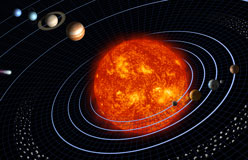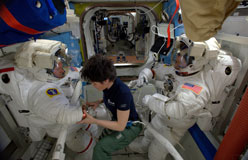Have you ever done this? You blow up a balloon, but you don’t tie a knot to hold in the air. Instead you let go, and air rushes out. The balloon flies all over. It stays up as long as air is still coming out. When the air is all gone, the balloon falls.
The balloon shows us something first described by British scientist Sir Isaac Newton (1643–1727). The idea is that for every action there is an equal and opposite reaction. Here’s how that works with the balloon. The action is the air rushing out. It moves with a certain amount of force in a certain direction. What is the equal and opposite reaction? That’s the balloon flying around. It moves with the same amount of force, but in the other direction.
Scientists use this same idea to launch a rocket. Here’s how it works.












